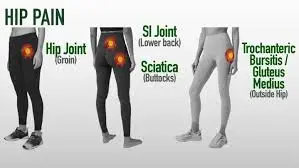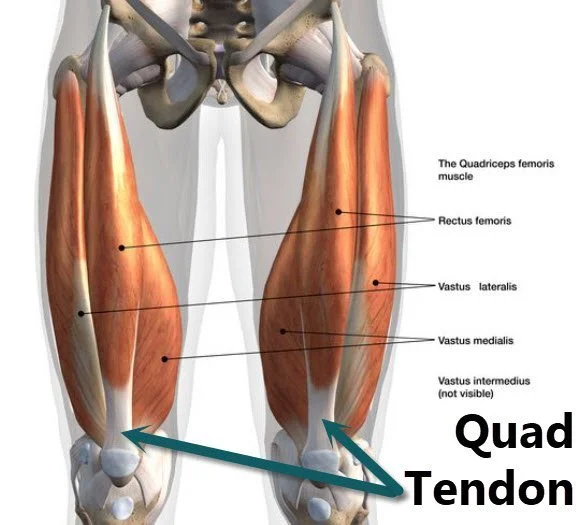12 Early Warning Signs of Rheumatoid Arthritis
Rheumatoid arthritis (RA) is a chronic autoimmune disorder that primarily affects the joints, causing pain, inflammation, and potential joint damage over time. Early detection is crucial for managing symptoms and slowing disease progression.
Recognizing the early warning signs of RA, such as joint pain, stiffness, and fatigue, can help ensure timely intervention and improved quality of life.
Rheumatoid Arthritis (RA): What is it?
An autoimmune illness, such as RA, occurs when the body’s healthy tissues are mistaken for foreign enemies by the immune system. It can also impact the entire body because it is a systemic condition.
The target tissue or organ becomes inflamed as the immune system reacts. RA might include the heart, lungs, joints, and eyes.
Rheumatoid Arthritis: What causes it?
It is uncertain what specifically causes rheumatoid arthritis. Scientists believe a mix of environmental influences, hormones, and heredity is to blame.
Your immune system normally protects your body from illness. However, with RA, something activates your immune system, causing it to attack your joints. Triggers might include an illness, smoking, or mental or physical stress.
What are the primary symptoms of rheumatoid arthritis?
Rheumatoid arthritis symptoms may include the following:
- Pain, swelling, stiffness, and discomfort in several joints.
- Stiffness, particularly in the morning or after sitting for extended periods
- Stiffness and pain in the same joints on both sides of the body
- Fatigue (Extreme fatigue)
- Weakness
- Fever
RA affects everyone differently. Some people’s symptoms grow over time, and in some patients, rheumatoid arthritis symptoms worsen fast. Many people experience episodes of symptoms (flares) followed by periods of no symptoms (remission).
What are the different phases of rheumatoid arthritis?
It is typically developed by RA in four stages:
- Stage 1: No bone or joint damage will be visible on an X-ray.
- Stage 2: The effect on the bone will be visible on an X-ray.
- Stage 3: An X-ray will reveal a specific type of bone and cartilage degradation that a physician may identify as being caused by RA, along with abnormalities in the affected joints.
- Stage 4: Ankylosis, a condition in which a joint stiffens and fuses with the bone, will occur.
12 early signs of Rheumatoid Arthritis:
Fatigue
A person with RA may feel excessively fatigued and diminished in energy before developing additional symptoms. They may also experience depression.
Feelings of lack of energy may affect:
- Factors such as daily activities, relationships, and sexuality might impact workplace efficiency.
- Fatigue may be caused by the body’s response to joint inflammation.
Slight fever
Inflammation connected with RA can make patients feel ill and overheated. They may have a minor increase in temperature, which is an early indicator of feeling fatigued. It may come before any obvious effects on the joints.
Weight loss
The third early warning sign of RA is unexplained weight loss, which might be an indirect result of inflammation. When someone feels sick and weary, they may lose their appetite, which can lead to weight loss.
Stiffness
Joint stiffness is another early warning symptom of RA. Stiffness can develop in one or two minor joints, most often in the fingers. It might start slowly and persist for many days.
In addition to stiffness in specific joints, a general sense of stiffness in the body may be an early indicator of RA.
This sort of stiffness typically occurs after a person has stayed motionless for an extended period. This discomfort is the source of morning stiffness, a common complaint among RA sufferers.
Tenderness in the joints
One common early symptom of RA is joint soreness in the hands and feet.
When squeezed or moved, the middle joint and the base of the fingers in the hands may feel sensitive. The joints near the base of the toes may be sore in the foot. People may walk on their heels or raise their toes as a result of this stiffness.
Joint pain
RA is indicated by joint discomfort in the fingers, wrists, and feet. In addition to producing more joint fluid, inflammation thickens the joint’s lining. These two elements cause pain by applying pressure to the capsule that envelops the joint and irritates its nerve endings.
Joint swelling
One common symptom of RA is swollen joints in the hands and feet. Although mild swelling may be an early symptom, joint swelling usually becomes more noticeable as RA worsens.
Joint redness
The joints may seem red due to inflammation in them. RA is indicated by discoloration of the skin surrounding the joints in the hands and feet. Because of the inflammation, the blood vessels in the surrounding skin enlarge, resulting in redness. The skin appears red because wider veins let more blood flow into this region.
Joint warmth
Inflammation is the source of joint warmth, which might exist before redness or swelling. This could be a precursor of RA.
Tingling and numbness
Hand and foot numbness and tingling might be a precursor of RA. These symptoms are caused by joint inflammation, which can compress nerves and cause loss of feeling.
Decrease in range of motion
A person may experience difficulty bending their wrist back and forth in the early stages of RA.
Ligaments and tendons may get damaged as the condition worsens, making it difficult to bend and straighten them.
Joints are affected on both sides
People with RA frequently have symptoms in the same joints on both sides of their body. Although this symmetry is common, not all people with the disorder experience it.
Complications of Rheumatoid Arthritis:
Joint abnormalities may result from RA’s destruction to the joints, surrounding cartilage, and adjacent bones if treatment is not received.
Rheumatoid nodules are solid masses that grow on or around the joints as a result of untreated RA. People frequently connect the illness with these nodules, which are a visual feature.
Apart from rheumatoid nodules and joint abnormalities, RA can also result in:
- Carpal tunnel syndrome
- inflammation in the heart, lungs, eyes, and other parts of the body
- increased risk of stroke and heart attack
Risk factors of Rheumatoid Arthritis:
The cause of the immune system’s attack on RA patients’ joints is unknown to medical professionals.
- Nonetheless, experts are aware of a few characteristics that raise the likelihood of developing the condition:
- Sex: Compared to males, women are more likely to acquire RA. According to 2011 research, 1 in 20 men and 1 in 12 women will get RA at some point in their lives.
- Smoking: There is compelling evidence that smoking both raises the likelihood of having RA and accelerates its progression, per a 2009 research.
- Obesity: A 2016 investigation, Obesity has been linked to a marginally higher chance of having RA.
Researchers have also discovered a few variables that lower the incidence of RA. These consist of:
- Moderate alcohol intake: A research conducted in 2012Moderate alcohol use was associated with a lower risk of RA.
- Breastfeeding: A 2014 research found that breastfeeding lowers the chance of having RA.
When to consult a physician
A person should consult a physician if they are exhibiting the early warning signs and symptoms of RA. A medical professional can assist in making the diagnosis and suggesting the best course of action.
The chance of developing problems from RA is decreased by early diagnosis and therapy.
FAQs
Which rheumatoid arthritis symptom appears first?
The signs and symptoms of rheumatoid arthritis usually appear gradually over weeks to months. The patient frequently first experiences stiffness in one or more joints, which is typically accompanied by joint soreness and pain while moving.
What were rheumatoid arthritis’s first discoveries?
Swelling, pain and tenderness, stiffness, weakness and exhaustion, and the emotional effect of symptoms were among the interacting elements that were found to describe the early signs of RA.
How early is rheumatoid arthritis defined?
Early RA: This phrase is typically used to describe a condition that is only a few weeks to a year old. However, according to other research, “early arthritis” is defined as a condition that lasts six months or less. After 12 weeks, the transition to chronic RA starts.
What is the first stage of rheumatoid arthritis?
During Stage 1, also referred to as Early RA, individuals typically start to exhibit minor symptoms. Particularly in smaller joints like the hands and feet, they might include joint discomfort and mild joint edema.
How can arthritis be identified early?
Examine your present symptoms and medical history. Examine yourself, focusing on your joints. Get X-rays, blood work, and other imaging procedures (such as an MRI or ultrasound). Do an arthrocentesis, which is the process of draining fluid from a joint.
How much time can you spend with RA?
Compared to those without the condition, those with RA should expect to live 10 years less. On the other hand, RA patients are surviving longer than ever. Life expectancy may still be impacted by the condition, although it is not as significant as it formerly was.
References
- Rheumatoid arthritis. (2025, February 7). Cleveland Clinic. https://my.clevelandclinic.org/health/diseases/4924-rheumatoid-arthritis
- Brazier, Y. (2024, June 14). Everything you need to know about rheumatoid arthritis. https://www.medicalnewstoday.com/articles/323361#treatment
- Burgess, L. (2023, March 6). Twelve early signs of rheumatoid arthritis. https://www.medicalnewstoday.com/articles/319810#when-to-see-a-doctor







